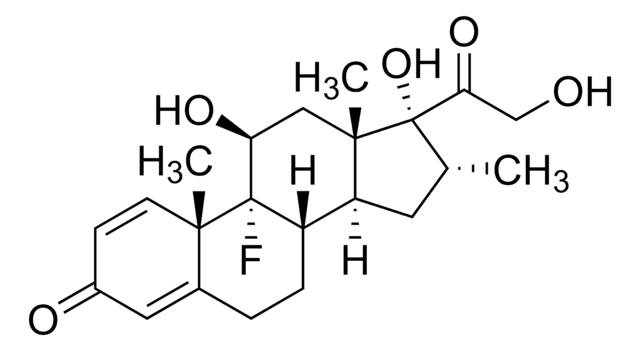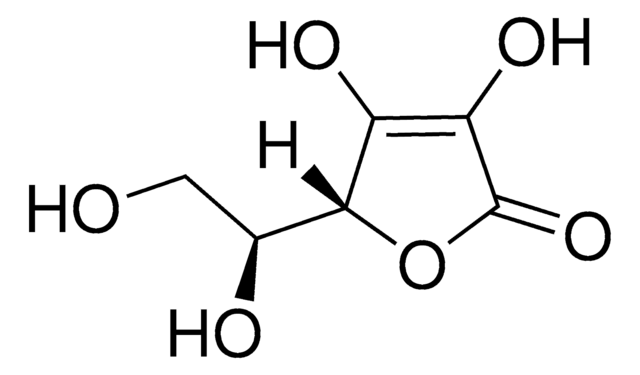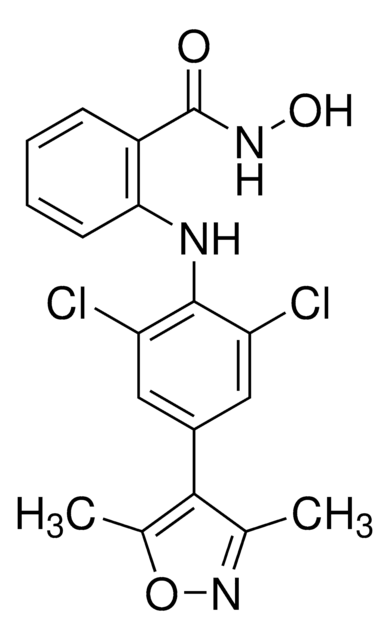SRP3250
Oncostatin-M from rat
recombinant, expressed in E. coli, ≥98% (SDS-PAGE), ≥98% (HPLC), suitable for cell culture
Synonym(s):
OSM
Sign Into View Organizational & Contract Pricing
All Photos(1)
About This Item
UNSPSC Code:
12352202
NACRES:
NA.32
Recommended Products
biological source
rat
recombinant
expressed in E. coli
assay
≥98% (HPLC)
≥98% (SDS-PAGE)
form
lyophilized
mol wt
24.4 kDa
packaging
pkg of 10 μg
technique(s)
cell culture | mammalian: suitable
impurities
<0.1 EU/μg endotoxin, tested
color
white to off-white
UniProt accession no.
shipped in
wet ice
storage temp.
−20°C
Gene Information
rat ... OSM(289747)
Related Categories
General description
OSM (oncostatin M) is a polypeptide growth factor that belongs to the interleukin-6 cytokine family that includes interleukin-6, interleukin-11, leukemia inhibitory factor, ciliary neurotrophic factor, cardiotrophin-1, and novel neutrophin-1/B-cell-stimulating factor-3. In rats, this protein shows high expression in the late fetal and neonatal testis. It is also expressed at lower levels in the maturing and adult testis. It is also thought to be expressed in Leydig cells in developing testis.
Recombinant rat Oncostatin M is a 24.4kDa protein, containing 215 amino acid residues.
Recombinant rat Oncostatin M is a 24.4kDa protein, containing 215 amino acid residues.
Biochem/physiol Actions
OSM (oncostatin M) functions as a ligand for two high affinity heterodimer receptors that share the signal transducing receptor gp130 (glycoprotein). The two receptors are- type I OSM receptor which is a dimer of the gp130 transducing receptor and the LIF (leukocyte inhibitory factor) receptor β-subunit, and the type II OSM receptor which contains a dimer of gp130 and the OSM receptor β-subunit. OSM is produced by neonatal Sertoli cells, where it induces Sertoli cell and gonocyte proliferation. It is responsible for the induction of spermatogenesis, and negates the effect of luteinizing hormone (LH) on Leydig cell progenitor formation, thus, acting as a regulator for this process. Study in rat shows that this protein stimulates the differentiation of OC15-5 (oval cells) into hepatocytes, and therefore, is thought to be key in liver regeneration by promoting oval cell differentiation into hepatocytes.
Sequence
MKRGCSSSSP KLLSQLKSQA NITGNTASLL EPYILHQNLN TLTLRAACTE HPVAFPSEDM LRQLSKPDFL STVHATLGRV WHQLGAFRQQ FPKIQDFPEL ERARQNIQGI RNNVYCMARL LHPPLEIPEP TQADSGTSRP TTTAPGIFQI KIDSCRFLWG YHRFMGSVGR VFEEWGDGSR RSRRHSPLWA WLKGDHRIRP SRSSQSAMLR SLVPR
Physical form
Lyophilized with no additives.
Reconstitution
Centrifuge the vial prior to opening. Reconstitute in water to a concentration of 0.1-1.0 mg/ml. Do not vortex. This solution can be stored at 2-8°C for up to 1 week. For extended storage, it is recommended to further dilute in a buffer containing a carrier protein (example 0.1% BSA) and store in working aliquots at -20°C to -80°C.
wgk_germany
WGK 3
flash_point_f
Not applicable
flash_point_c
Not applicable
Certificates of Analysis (COA)
Search for Certificates of Analysis (COA) by entering the products Lot/Batch Number. Lot and Batch Numbers can be found on a product’s label following the words ‘Lot’ or ‘Batch’.
Already Own This Product?
Find documentation for the products that you have recently purchased in the Document Library.
Oncostatin-M inhibits luteinizing hormone stimulated Leydig cell progenitor formation in vitro.
Teerds KJ et al
Reproductive Biology and Endocrinology, 5, 43-43 (2007)
Oncostatin M inhibits proliferation of rat oval cells, OC15-5, inducing differentiation into hepatocytes.
Okaya A et al
The American Journal of Pathology, 166(3), 709-719 (2005)
Bruce, A.G., et al.
Cytokine Reference, 585-598 (2001)
T M Rose et al.
Proceedings of the National Academy of Sciences of the United States of America, 88(19), 8641-8645 (1991-10-01)
Oncostatin M (OSM), a glycoprotein of Mr approximately 28,000 produced by activated monocyte and T-lymphocyte cell lines, was previously identified by its ability to inhibit the growth of cells from melanoma and other solid tumors. We have detected significant similarities
Zhen Wang et al.
Molecular medicine reports, 19(3), 1529-1542 (2018-12-29)
Psoriasis is a chronic inflammatory skin disease. Keratinocytes (KCs), as skin‑specific cells, serve an important role in the immunopathogenesis of psoriasis. In the present study, transcriptome data derived from psoriasis‑like KCs were used together with the reported transcriptome data from
Our team of scientists has experience in all areas of research including Life Science, Material Science, Chemical Synthesis, Chromatography, Analytical and many others.
Contact Technical Service


